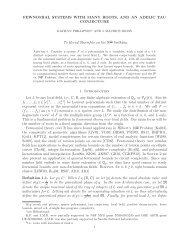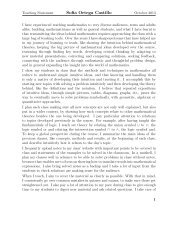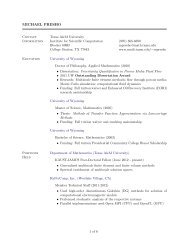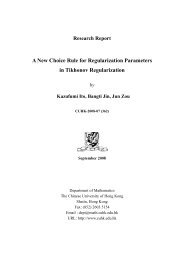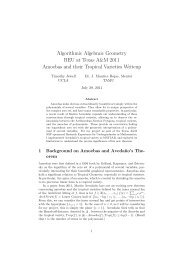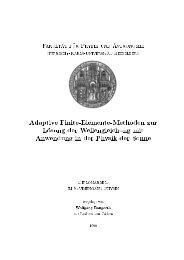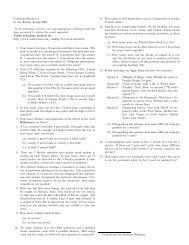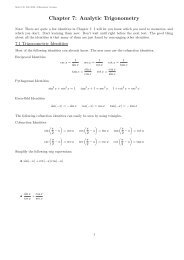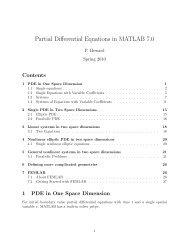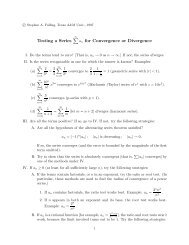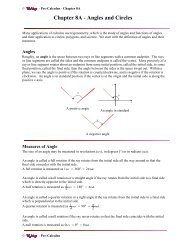Pythagoras and the Pythagoreans - Department of Mathematics
Pythagoras and the Pythagoreans - Department of Mathematics
Pythagoras and the Pythagoreans - Department of Mathematics
Create successful ePaper yourself
Turn your PDF publications into a flip-book with our unique Google optimized e-Paper software.
<strong>Pythagoras</strong> <strong>and</strong> <strong>the</strong> <strong>Pythagoreans</strong> 35<br />
The <strong>Pythagoreans</strong> also demonstrated solutions to special types <strong>of</strong><br />
linear systems. For instance, <strong>the</strong> bloom <strong>of</strong> Thymaridas (c. 350 BCE)<br />
was a rule for solving <strong>the</strong> following system.<br />
x + x1 + x2 + ...+ xn = s<br />
x + x1 = a1<br />
x + x2 = a2<br />
...<br />
x + xn = an<br />
This solution is easily determined as<br />
x = (a1 + ...+ an) − s<br />
n − 2<br />
Itwasusedtosolvelinearsystemsaswellastosolveindeterminate<br />
linear equations.<br />
The <strong>Pythagoreans</strong> also brought to Greece <strong>the</strong> earth-centered cosmology<br />
that became <strong>the</strong> accepted model until <strong>the</strong> time <strong>of</strong> Copernicus<br />
more that two millenia later. Without doubt, this knowledge originated<br />
in Egypt <strong>and</strong> Babylon. Later on, we will discuss this topic <strong>and</strong> its<br />
ma<strong>the</strong>matics in more detail.



